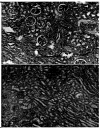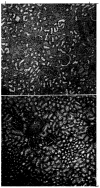EXTRACORPOREAL PERFUSION FOR OBTAINING POSTMORTEM HOMOGRAFTS
- PMID: 14087127
- PMCID: PMC3091281
EXTRACORPOREAL PERFUSION FOR OBTAINING POSTMORTEM HOMOGRAFTS
Figures









References
-
- Blumenstock DA, Hechtman HB, Collins JA. Preservation of the canine lung. J Thoracic Surg. 1962;44:771. - PubMed
-
- Goodwin WE, Kaufman JJ, Mims MM, Turner RD, Glassock R, Goldman R, Maxwell MM. Human renal transplantation. I. Clinical experiences with 6 cases of renal transplantation. J Urol. 1963;89:13. - PubMed
-
- Huggins C, Carter E, McDermott W. Differential hypothermia in experimental hepatic surgery. A M A Arch Surg. 1957;74:327. - PubMed
-
- Humphries AL, Jr, Russell R, Ostofin J, Goodrich SM, Moretz WH. Successful reimplantation of dog kidney after 24 hour storage. S Forum. 1962;13:380. - PubMed
MeSH terms
Substances
Grants and funding
LinkOut - more resources
Full Text Sources
Other Literature Sources
Miscellaneous
